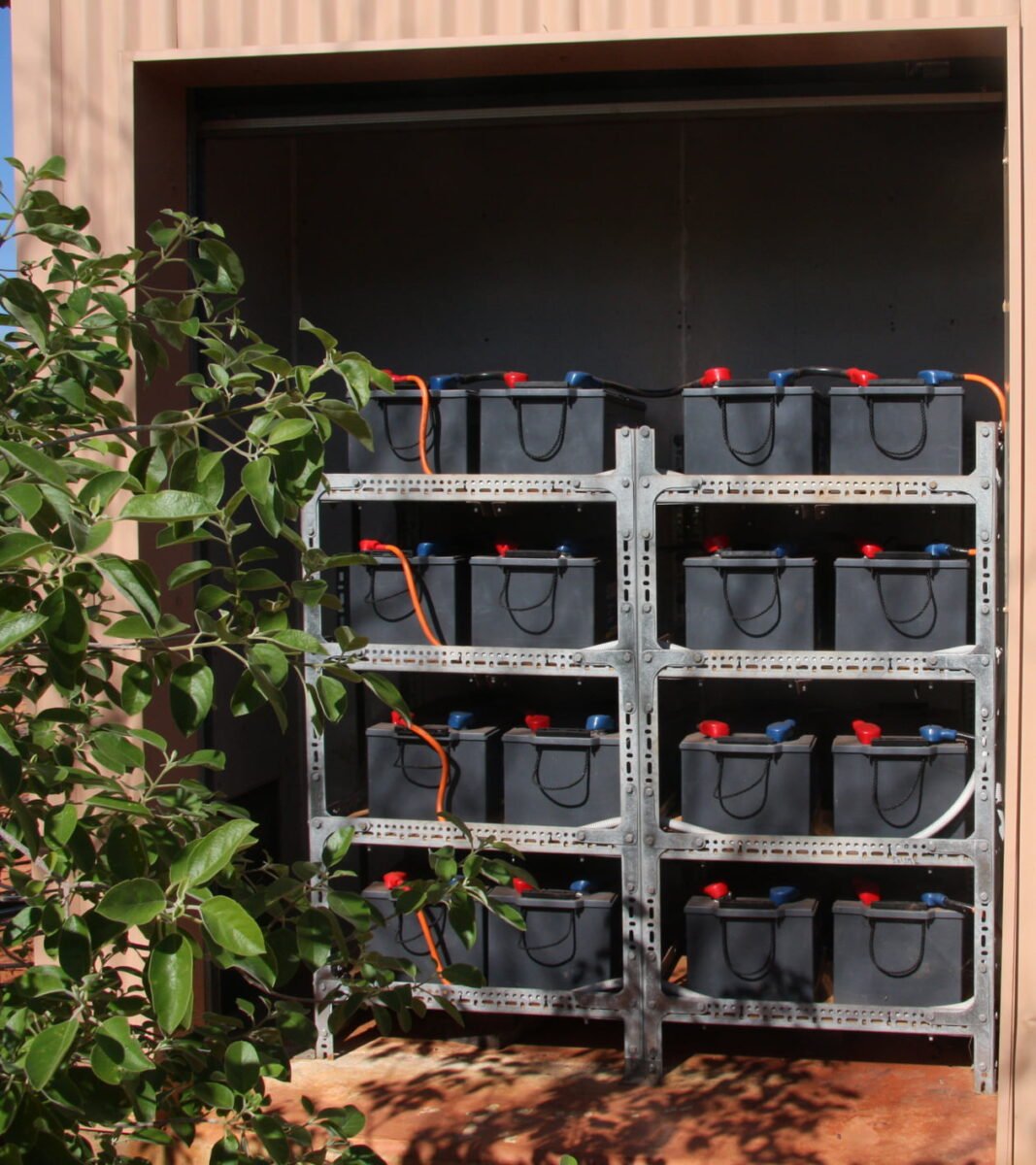by Collyn Rivers
Interconnecting Batteries
Interconnecting batteries in parallel or series is feasible but you need to know how it works. And its limitations. Interconnecting your batteries in series increases the voltage. Your current remains as before. Interconnecting your batteries in parallel increases the current. Your voltage remains as before. No matter how connected, your stored energy remains the same.
Batteries consist of cells (each of about two volts when fully charged). A 12-volt battery has six such cells. The cells are connected end-to-end.
Series connection increases battery voltage. Most car and travel trailer batteries are twelve volts. Some big motorhomes, however, have 24-volt systems. These typically have two 12-volt batteries in series. Many large solar systems use 48-volt storage – of banks of four 12-volt batteries in series.
Parallel connection increases battery capacity (i.e. the amount of energy it can store). It is often used to limit individual battery weight. For example, a 12-volt 240 amp-hour lead-acid battery weighs about 65 kg (145 lb). To ease handling, it’s common to parallel-connect two 12-volt deep-cycle 120 amp-hour batteries.
Large solar systems typically parallel-connect banks of four 12-volt batteries to store energy at 48 volts.

That shown above is a bank of 16 batteries (each of 12-volt). They are connected in series/parallel. This provides 48 volts at approximately 960 amp-hours. Pic: author’s previous all solar house north of Broome.
Interconnecting batteries in parallel or series – the pros and cons
Each way of interconnecting has advantages and disadvantages. These, however, are not the same advantages and disadvantages. Nevertheless, if you need over twelve volts, and/or substantial capacity, you must increase voltage, current or both.

Batteries – series connection
Connecting two batteries end-to-end results in the total voltage being the sum of each battery. The available current and voltage are that of the ‘weakest’ cell.
A few motorhomes have 24-volt systems. They use 12-volt series-connected batteries. Never tap one or other battery to obtain 12 volts. If you do, the battery less drawn is fully-charged sooner. This inhibits the other battery fully charging. The only remedy is disconnecting and charging each separately.
You can, however, obtain that 12 volts via an ‘equaliser’ – or a 24-volt to 12-volts This is done in boats. Many have 24 volts winches, but 12-volts for all else. See 12-volts-dc-from-24-volts-dc/
Batteries parallel-connected
Paralleled batteries have socialist tendencies. Each takes according to its needs. Each gives according to its means. That more highly charged discharges into that less charged. This continues until their voltage is equal. Paralleled batteries (or paralleled strings of series-connected batteries) must all be the same voltage. They may, however, be of widely varying capacity.

Battery makers are rarely opposed to parallel connection. A few, however, set limits. General Electric says ‘there are no major problems with parallel charging.’ Exide, however, is more cautious. It advises ‘up to ten batteries may be interconnected without problem as long as certain precautions are followed’.
No Golden Way
Contrary to occasional forum ‘advice’, there is ‘golden way’ of interconnecting batteries to increase their energy. Any combination of the same batteries always provides you with the same total energy.
There is no problem parallel charging batteries of the same type and voltage, but of different capacities. They look after themselves. ‘Each draws a proportionate share of the available charge. All reach about the same level of charge at roughly the same time,’ (says Ample Power Company). They discharge in much the same way.
Ample Power company emphasises to connect paralleled batteries via equal length and size cables.
What happens when a battery fails?
Traditional starter batteries tend to fail instantly. Over time, active material shed from their plates piles up in the bottom of each cell. Furthermore, that loss is rapid if the battery is regularly over-discharged. If/when shed material rises high enough to short-circuit the plates, the battery fails instantly.
Lead-acid deep cycle batteries dislike being left uncharged. If that is done, dendrite (a tree–like structure) forms during recharge. This causes a virtual ‘short circuit’ across the cell. This too kills the battery.
The main risk is of hydrogen being created. But, providing the battery compartment is ventilated, that risk is unlikely.
Summary
Use parallel connection if large capacity is needed. Use parallel-connected pairs of series-connected batteries, for higher voltage large capacity systems.
Many big property stand-alone solar systems run at 48 volts. Most parallel-connect strings of four series-connected 12-volt batteries.
The above applies to all batteries: conventional lead-acid, AGM and lithium. Do not interconnect batteries of different chemical types.
See also Lithium batteries in travel trailers
Further information
If you liked this article you will like my books. Batteries and their charging are fully covered Caravan & Motorhome Electrics. That for solar in cabins and RVs is in Solar That Really Works. That home and property systems are in Solar Success. My other books are the Camper Trailer Book, and Caravan & Motorhome Book. For information about the author Click on Bio.
References
• Ample Power Company 1990. Parallel Batteries, Seattle, Washington.
• General Electric 1979. The Sealed Lead Battery Handbook, Publication BBD-OEM-237, GEC, Gainesville, Florida.
• Linden. D 1984. Handbook of Batteries and Fuel Cells, 2nd Ed McGraw-Hill, New York.
• Barak M 1980. Electrochemical Power Sources: Primary and Secondary Batteries, 1st ed. IEEE UK and New York.




